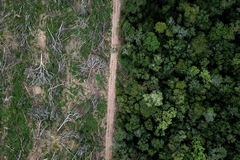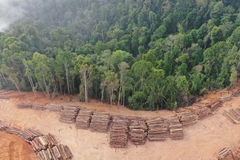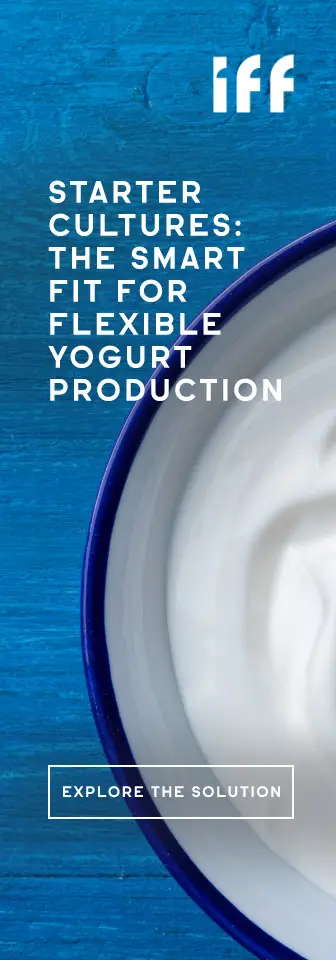Future food: Major EU project to develop alternative, smart proteins
New protein foods to be made from plants, fungi and by-products as a direct response to global food security, can be expected to launch in 2025
07 Oct 2019 --- A range of protein foods made from plants, fungi, by-products and residues will emerge from the Smart Protein project, as its collaborators seek to build a future-proof protein supply by creating sustainable and nutritious alternative proteins. The first foods brought to life from this project are expected to launch in 2025 and will be the result of the new EU project funded by the European Commission which begins early next year.
A primary aim of the project is to help build a future-proof protein supply by creating sustainable and nutritious alternative proteins. This is in direct response to some of the most urgent challenges faced by the planet, including climate change and global food security.
It is expected that the first wave of products – including plant-based meats, fish, seafood, cheese, infant formula and other dairy products, including baked goods – will go to market in or around 2025.
Smart Protein has a total budget of €9.6 million (US$10.5 million), €8.2 million (US$8.9 million) of which is provided by the European Commission. It will run for four years from January 01, 2020.

A total of 33 partners from industry, research, and academia across 21 different countries, will collaborate on the project, which is led by the School of Food and Nutritional Sciences at University College Cork in Ireland. Significant collaborators include Fraunhofer, the University of Copenhagen, ProVeg, Barilla, Thai Union and AB InBev.
ProVeg is one of the partners in consortium and is responsible for all the communication of the Smart Protein project.
According to Verena Wiederkehr, International Head of Food Industry & Retail for ProVeg, 29 consortiums all over Europe applied for the call, and Smart Protein was rated the best, with regard to the methodology and the fact that it goes “beyond state-of-the-art.”
“It’s a cutting-edge project that has not been there before,” she tells FoodIngredientsFirst.
“Plant-based foods are absolutely the food of the future, and there are so many advantages when you look at many pressing problems that exist in the world today. Also, the health benefits of plant-based foods are valuable and in terms of resources, it’s much more sustainable,” Wiederkehr notes.
In terms of seafood and cheese products, Wiederkehr says there are lots of opportunities and a high demand since “current products do not satisfy the consumer who focuses on taste and texture.”
New products will also be developed from plants, including fava beans, lentils, chickpeas, and quinoa – with a focus on improving their structure, taste, and flavor. Investigations into cost-effective protein extraction, protein chemistry, polymeric structure, physicochemical behavior and protein-protein interaction will be carried out to maximize the functionality of these proteins and customize their usage in food and drinks.
“Furthermore, the project will focus on ancient grains and we will make high protein products using these ingredients, our goal is to make final products, as well as ingredients for the food industry and since there are so many partners from diverse segments. We will then aim to bring the individual products into the market,” Wiederkehr explains.
There will be some technical challenges to overcome. However, expertise within the consortium will address issues such as off-flavors and sensory experiences. Wiederkehr adds: “That is why we have the brightest minds on board this project.”
Within the project, ProVeg will conduct a pan European consumer survey. “By gaining a comprehensive understanding of the competitive and consumer landscapes we will be able to identify the untapped potential for new product development (NPD), as well as which will increase trust and consumer acceptance of plant-based products,” she says.
The four-year project has been funded in its entirety, there may be additional investments when products are launched, but this will be handled by each individual company, Wiederkehr notes.
“The techniques and processes have not been deployed on a project of this type and scale before, and the potential positive impact for the planet cannot be underestimated. By upcycling by-products and residues to produce edible protein for human consumption, we are taking huge strides towards a much-needed circular economy that can truly feed our rapidly-growing population,” Wiederkehr explains.
“With the Smart Protein project, we are reconsidering the entire protein value chain from production to consumption in terms of both productive and environmental performance. We are also targeting soil-health restoration through organic regenerative agriculture practices that are able to shift from carbon-source to carbon-sink agriculture, which is more resilient to the effects of climate change and helps farmers’ long-term financial futures,” Emanuele Zannini, Senior Research Officer with the University of Cork and the Lead Coordinator of Smart Protein says.
Smart Protein’s approach and strategy are unique in that the key focus is on by-products and residues, ingredients that are usually used for animal feed. Microbial biomass proteins will be created from edible fungi by up-cycling side streams from pasta (pasta residues), bread (bread crusts) and beer (spent yeast and malting rootlets).
By Elizabeth Green













